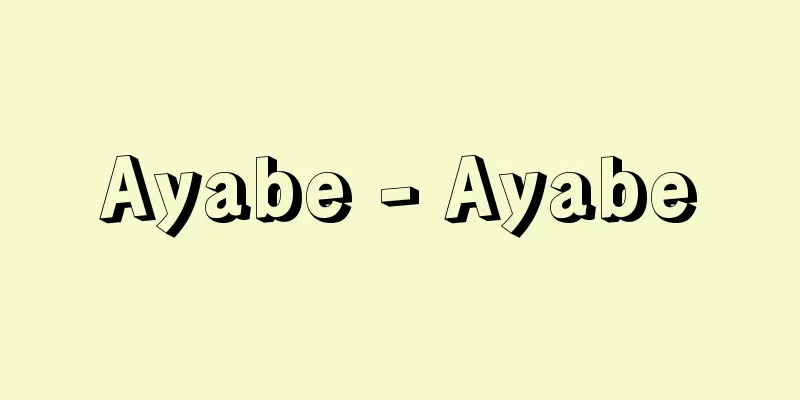Suzu moss beetle - Suzu moss beetle

|
A small marine animal belonging to the order Podopodidae of the phylum Cryptozoa and the family Barentosiidae. It is found along the coasts of Japan, with a body length of about 4.5 mm. Dozens of individuals are connected by an organ called a stalk, and attach to the surfaces of rocks, shellfish, sponges, sea squirts, and seaweed. The body consists of a calyx, a stalk, and a stalk. The calyx is transparent and cup-shaped, with a crown of 20 to 24 tentacles on the upper edge. The mouth is in the center of the crown, and it feeds on microorganisms. The stalk, which stands upright from the stalk, consists of a long, slender part covered with a well-developed muscle segment at the base and a thick cuticle. The cuticle is pale yellow or yellowish brown, with low projections here and there. This overall appearance resembles the udonge, a common name for the egg masses of the lacewing insect, so it is also called sea udonge. When stimulated, the basal myotome bends, causing the calyx to move like a bell, hence the Japanese name. When living conditions become poor, the calyx is lost, leaving only the stalk and stalk, and when conditions improve, the calyx easily regenerates. For this reason, nutrients are stored in the basal myotome. Experiments have confirmed that it can be completely regenerated from small pieces of the stalk and stalk. Also, when bending of the stalk is inhibited for some reason, a new stalk is formed under the calyx, and some individuals have multiple myotomes through this repetition, and these myotomes also have the ability to produce stalks. It does not undergo seasonal dormancy, and no dormant buds are observed. In addition to sexual reproduction, it reproduces asexually at the tips of the stalks, with the larvae metamorphosing to become adults. [Konno Kazuhiro] When the stalk that stands upright from the stalk bends, the cup-shaped calyx at the end looks like a bell, hence the name. It is also called Umiudonge. © Underwater Fort Enterprise, Isamu Soyama "> Bryozoan (ecology) ©Kanzo Otawa "> Schematic diagram of the body structure of the bryozoan Source: Shogakukan Encyclopedia Nipponica About Encyclopedia Nipponica Information | Legend |
|
曲形(きょくけい)動物門足胞目バレントシア科に属する海産小動物。日本各地の沿岸に分布し、体長4.5ミリメートルぐらいで、数十個体が走根とよばれる器官で連なり、岩石、貝類、海綿類、ホヤ類、海藻類などの表面に着生する。体は萼(がく)部、柄部、走根からなり、萼部は透明な椀(わん)形で、上縁に20~24本の触手の冠がある。冠の中央部に口があり、微小生物を摂食する。走根から直立する柄部は、基部がよく発達した筋肉節と厚いクチクラに覆われた細長い部分からなる。クチクラは淡黄色ないし黄褐色で、ところどころに低い突起がある。この全体のようすが昆虫のクサカゲロウの卵塊の俗称であるウドンゲに似ているので、ウミウドンゲともよばれる。 刺激を受けると基部筋肉節の屈曲によって、萼が鈴を振るように動くのが和名の由来である。生活条件が悪くなると萼部は失われ、柄部と走根だけになり、条件が回復すると萼部は容易に再生する。そのためか基部筋肉節には養分が蓄えられている。柄部、走根の小片から完全に再生することは実験によっても確かめられている。また、なんらかの理由で柄部の屈曲が阻害されたとき、萼部の下に新しい柄部がつくられ、その繰り返しで複数の筋肉節をもつ個体もあり、その筋肉節にも走根を生ずる能力がある。季節的な休眠は行わず、休芽はみられない。繁殖は有性生殖によるほかに、走根の先端で無性的に増殖するが、幼生は変態して成体となる。 [紺野一碩] 走根から直立する柄部が屈曲すると、その先の椀形の萼部が鈴を振るようにみえるのが名の由来である。ウミウドンゲともいわれる©水中フォート・エンタープライズ 楚山いさむ"> スズコケムシ(生態) ©大多和鐘三"> スズコケムシの体制模式図 出典 小学館 日本大百科全書(ニッポニカ)日本大百科全書(ニッポニカ)について 情報 | 凡例 |
<<: Stannic acid (Suzusan) (English spelling)
>>: Tin mineral (tin mineral) - Suzukobutsu (English spelling) tin mineral
Recommend
Casanova, PG - Casanova
…An economist on par with Frank is Theotonio Dos ...
Horn of Africa - The Horn of Africa
Horn of Africa. The eastern part of the African co...
Katsuhiko Kakei
Constitutional scholar. Born in Nagano Prefecture...
Jurassic system
…The second of three periods in the Mesozoic Era,...
Landau, Lev Davidovich
Born: January 22, 1908, Baku, Azerbaijan [Died] Ap...
Melamine resin paint - Melamine resin paint
A type of amino-alkyd resin paint. It compensates ...
Adhesive root
…Some of these creep just above the surface of th...
Amarna Letters - Amarna Letters
These clay tablets were discovered in 1887 in an ...
Ontology (English spelling)
A dictionary for defining concepts used in expert ...
Grass and rattan
Plant. Perennial grass of the Poaceae family. Anot...
Goring, C.
… [Biological and psychological factors of crime]...
Cho Yŏn-hyŏn (English spelling)
1920‐81 Korean literary critic. His pen name was S...
Burebista
...A region rich in gold and silver, it had been ...
Side road - Feeling
Also called "Kanto", it can be written ...
Onosaki ruins
...The prefectural capital city, located in the n...









